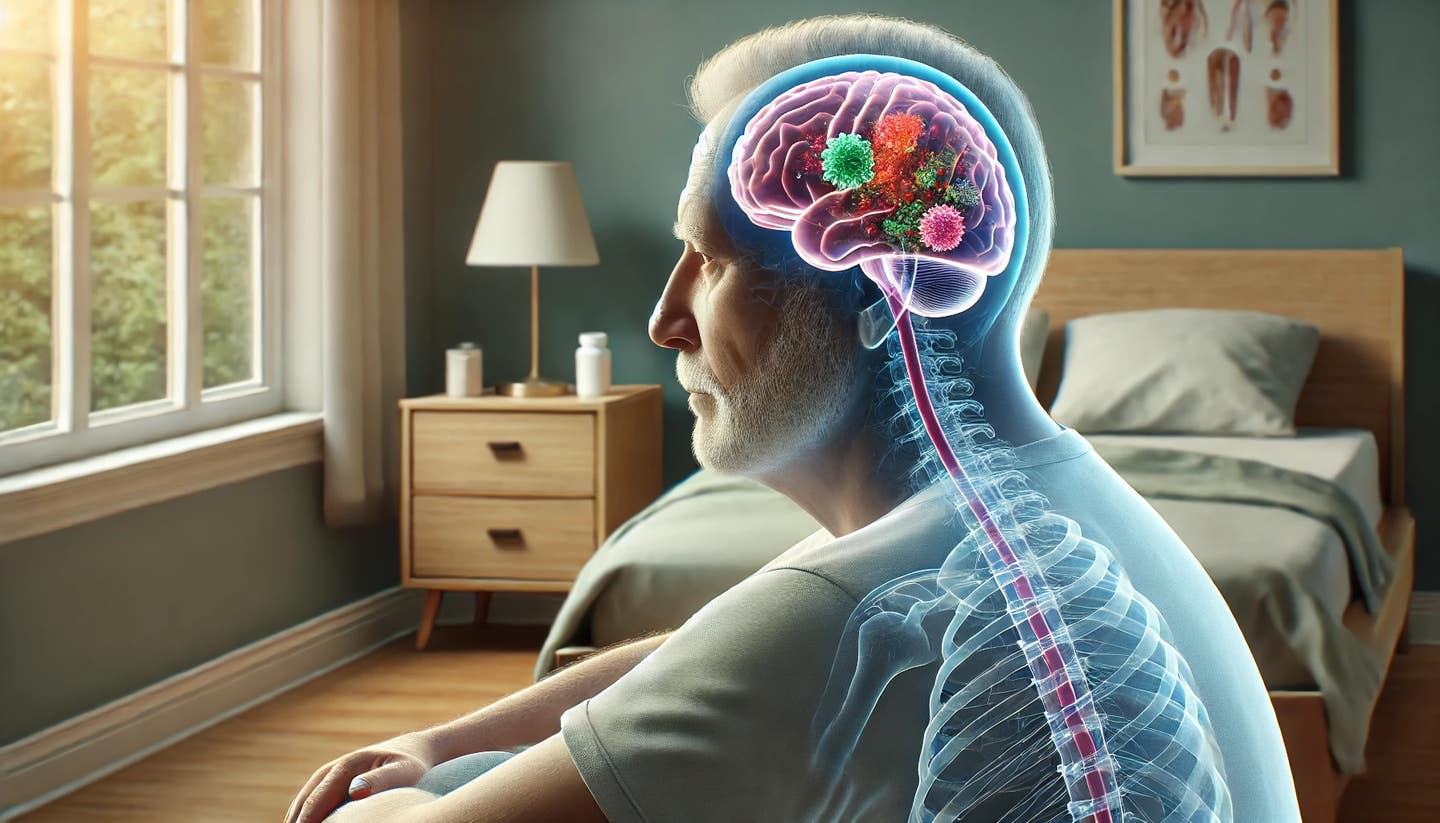Microbial infections in the brain might play a significant role in dementia and Alzheimer
Supported by new findings and personal stories, scientists believe infections—bacterial, fungal, or viral—could play a hidden role in Alzheimer’s disease.

Alzheimer’s disease slowly strips away memory and identity, affecting millions of people around the world. (CREDIT: Image generated with pixl.pro)
Alzheimer’s disease slowly strips away memory and identity, affecting millions of people around the world. For decades, scientists have struggled to understand why it happens. Despite enormous efforts, a cure remains out of reach, and its causes are still unclear.
More than $100 billion has been spent on research, yet the mystery endures. Lately, though, some scientists are looking in a new direction. They believe infections—bacterial, fungal, or viral—could play a hidden role in the disease. This idea has sparked debate but is supported by new findings and personal stories.
One of those stories belongs to Nikki Schultek, a mother of two whose life was upended nine years ago. She experienced severe memory problems and physical symptoms, but doctors couldn't find the cause after countless tests. Finally, she was diagnosed with a brain infection caused by Borrelia burgdorferi, the bacteria behind Lyme disease.
After taking antibiotics, Schultek’s symptoms began to fade. Her recovery revealed a gap in how brain infections are spotted and treated. She later co-authored a paper documenting cases where brain infections mimicked dementia. Some patients who received proper treatment showed real improvement in memory and function.
How Hidden Infections May Drive Dementia Risk
These aren’t isolated cases. Scientists have long known that certain microbes can affect brain health. Fungi like Cryptococcus neoformans and bacteria such as Borrelia have been linked to cognitive decline that resembles dementia.
Viruses, too, have raised concerns. The herpes simplex virus and its cousin, herpes zoster, have turned up in brain tissue from dementia patients. But without clear testing guidelines, many infections go unnoticed or are discovered too late.
Doubt about a possible infection link has deep roots. Over 100 years ago, Alois Alzheimer himself questioned whether microbes might be involved in the disease. His colleague, Oskar Fischer, had similar thoughts. Still, early tools weren’t advanced enough to follow those leads.
That’s beginning to change. Modern lab techniques now allow researchers to trace even small traces of infection in brain tissue. With these tools in hand, scientists are once again exploring the long-dismissed idea that germs could be part of the Alzheimer’s puzzle.
Related Stories
Recent studies have revealed that the human brain, once thought sterile, hosts a diverse microbiome. In healthy brains, microbial communities are balanced, resembling the gut microbiome.
In Alzheimer’s patients, however, this balance often skews toward harmful overgrowths. Bacteria such as Streptococcus and Staphylococcus and fungi like Candida and Cryptococcus are frequently found in these cases.
Pioneering Research into the Brain Microbiome
Schultek now leads the Alzheimer’s Pathobiome Initiative, bringing together scientists across disciplines to explore how infections contribute to dementia.
According to Richard Lathe, an infectious medicine expert at the University of Edinburgh, their findings suggest that up to 50% of dementia cases might be treatable if infections are addressed early.
The brain microbiome remains largely uncharted due to sampling challenges. Unlike the gut, the brain is protected by the blood-brain barrier, making it difficult to access microbial evidence.
Researchers like David Corry at Baylor College of Medicine have started culturing brain samples to identify microbes, while others use gene amplification techniques to confirm findings. These studies have uncovered previously unknown organisms, shedding light on the brain’s microbial complexity.
Vaccines could play a vital role in reducing dementia risk. The BCG vaccine, originally developed for tuberculosis, has shown promise in protecting against Alzheimer’s. Studies suggest it reduces risk by up to 75%. Vaccines for shingles, influenza, and other diseases also appear to offer some protection, likely by boosting overall immunity.
This connection between infections and cognitive decline extends beyond the brain. In Denmark, research has linked multiple infections to increased Alzheimer’s risk, while individuals with Alzheimer’s are more prone to infections. Maintaining a robust immune system may be key to mitigating these risks.
Preventing Brain Infections: A Multifaceted Approach
Timely treatment of infections throughout the body could help protect the brain. However, diagnosing brain infections often requires invasive procedures like lumbar punctures, which carry risks. Until non-invasive diagnostic tools are developed, raising awareness of infection-related dementia is crucial.
Lifestyle changes also play a role. Good oral hygiene, for instance, can reduce the risk of gum disease, which has been linked to increased blood-brain barrier permeability. A balanced diet and regular exercise support immune function, helping the body combat infections naturally.
Despite mounting evidence, skepticism persists. Some researchers dismiss the idea of microbes contributing to dementia, calling it improbable. Funding for such research remains limited, hindering progress. However, Schultek and her team remain undeterred, advocating for further studies to uncover the truth.
The potential implications are enormous. Understanding the brain microbiome and its role in dementia could transform treatment strategies. Vaccination campaigns, targeted antimicrobial therapies, and preventive measures might one day reduce the burden of Alzheimer’s disease worldwide.
Schultek’s journey from patient to advocate highlights the urgent need for change. Whether through better diagnostics, innovative treatments, or public awareness, addressing infections in dementia offers hope to millions. As Lathe notes, “Boosting the immune system and treating infections early could significantly alter the course of this disease.”
Note: Materials provided above by The Brighter Side of News. Content may be edited for style and length.
Like these kind of feel good stories? Get The Brighter Side of News' newsletter.
Joseph Shavit
Head Science News Writer | Communicating Innovation & Discovery
Based in Los Angeles, Joseph Shavit is an accomplished science journalist, head science news writer and co-founder at The Brighter Side of News, where he translates cutting-edge discoveries into compelling stories for a broad audience. With a strong background spanning science, business, product management, media leadership, and entrepreneurship, Joseph brings a unique perspective to science communication. His expertise allows him to uncover the intersection of technological advancements and market potential, shedding light on how groundbreaking research evolves into transformative products and industries.



